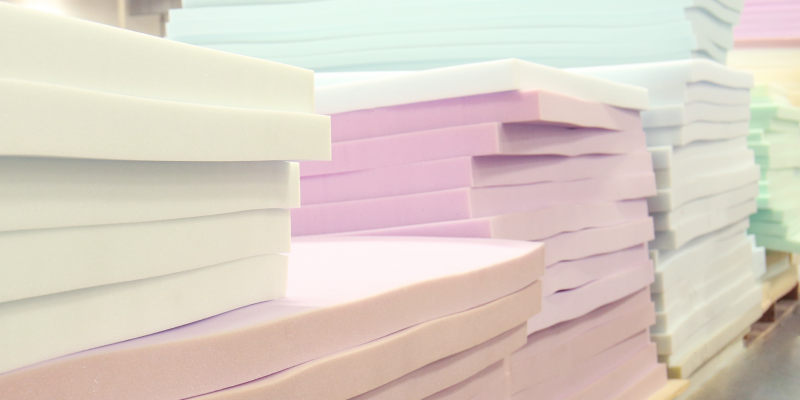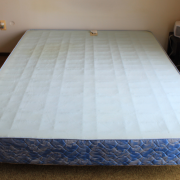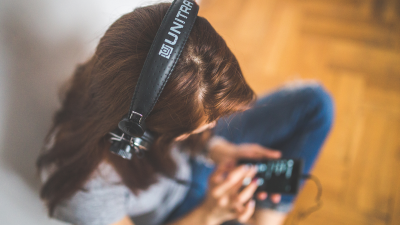Mattress materials vary widely depending on the type of mattress. If you sliced a new mattress in half, you’d see many layers of high-quality fabrics, gels, and foam mattress materials. Other mattresses are built with springs, coils, and other materials.
For a good night’s sleep, it’s important that you find a material type that’s comfortable for you and your sleeping style.
Understand the importance of mattress materials.
Most Used Mattress Materials Across The Board
Polyester
Polyester fabrics act as a filler substance in pillowtop mattress types as well as mattress covers and protective liners.
Foam
Foam is a soft, shock-absorbing substance that regulates temperature and provides relief for pressure points. There are many varieties of foam used in mattresses, such as memory foam, polyurethane foam, and viscoelastic.
Wool
Some mattresses include natural materials like wool to provide extra cushion for the sleeper.
Cotton
Cotton is used on the surface of the mattress as well as the interior to keep the mattress breathable, plush, and comfortable for the sleeper.
Flame Retardants
Flame retardants provide resistance to fires and are a mandatory additive in every mattress sold in the US as a safety measure.
Metal Coils
Iron or steel coils are included in some spring-loaded mattresses and hybrid mattresses to provide structural support for the mattress and bear the weight of the sleeper.
Adhesives
Glues and adhesives bind the various mattress materials together and are often applied in conjunction with quilting techniques to provide a firm, long-lasting bond.
Materials Commonly Used in Each Mattress Type
Memory Foam Mattress
Memory foam mattresses are constructed with various types of viscoelastic memory foam layers consisting of gel and polyurethane foam. Together, these soft materials provide a breathable and soft cushion that conforms to the sleeper’s body.
Latex Mattresses
Latex mattresses are made with natural or synthetic latex materials. Most latex is produced as Dunlop orTalalay latex. Unlike memory foam, latex is firm and provides structural support for a wide variety of sleeping styles.
Innerspring Mattresses
Innerspring mattresses are primarily constructed with metal coils or springs that form the foundation of the mattress alongside foam, viscoelastic, and a latex top layer. Innerspring mattresses’ steel coils are bouncy and comfortable and provide strong support for back, side, and stomach sleepers.
Wrapped Coil Mattresses
Wrapped coil mattresses are similar to innerspring mattresses, except they feature individually wrapped coils encased in fabric. Wrapped coil mattresses conform to the sleeper’s body more naturally than innerspring varieties because each coil moves independently of the others.
Hybrid Mattresses
Hybrid mattresses, such as those offered by Helix Sleep, are composed of an individually wrapped coil core with layers of gel memory foam, latex, and other plush top layers. Hybrid mattresses prevent sagging and offer superior structural support for side, back, and stomach sleepers.
Organic Mattresses
Organic mattresses, like Birch, are made with organic cotton, latex derived from rubber tree sap, sheep’s wool, and other natural products. Organic mattresses do not include any hazardous materials or synthetic byproducts.
Airbeds
Airbeds, otherwise known as air mattresses, are made with polyvinyl chloride lining and are reinforced with plastics and polyurethane-based textiles. Air mattresses are portable and can easily be taken anywhere, which makes them convenient but not very supportive.
Waterbeds
Waterbeds feature heavy-duty upholstery to prevent leaks and rips and are constructed with polyvinyl chloride (PVC). Waterbeds alleviate pressure on the spine and can benefit sleepers with chronic health ailments such as arthritis.
Futons
Futons are mattresses that are made of cotton, wool, plastics, and latex materials bound within a quilted exterior. Futons are convenient because they double as seating but tend not to offer structural support for sensitive sleepers.
What About Pillow-Top Mattresses or Mattress Toppers?
Pillow-top mattresses and mattress toppers aren’t a type of mattress, but rather they are features of mattresses. In other words, there are many types of mattresses that come with a pillow top or mattress topper, including hybrid, innerspring, and latex mattresses.
Usually, pillow-top mattresses are loaded with natural or organic fibers such as down and cotton. However, some pillow-top mattresses and mattress toppers are constructed with synthetic fibers, microfibers, and polyester additives. Mattresses toppers can be added onto existing mattresses to add between one and six inches of additional support.
Mattress toppers are often built with interior pockets of fiber to help maintain stability and structural support. Therefore, sleepers can shift on the mattress without the interior of the mattress sliding around under the upholstery.
Why Mattress Materials Matter
Everybody sleeps differently. There are many common types of sleeping styles and positions, and everybody has their own preferences when it comes to stability, firmness, and temperature. Choosing the right mattress materials will help sleepers personalize their mattress so that it matches their sleeping style—for example, side sleepers with back pain may want a hybrid mattress with an organic cotton mattress topper.
Some sleepers prefer only organic or natural materials, whereas others would rather sleep on steel springs or coils. Neither preference is better than the other. If you’re shopping for a new bed, the important thing is that you find one that is built with the materials your body needs.
At Helix Sleep, the material in every mattress is personalized to match the sleeper’s unique preferences. To find a mattress with the right materials, take the Helix Sleep Quiz today and find a mattress that suits your body weight, firmness level preference, pressure points, and everything else you need for a good night’s sleep.

















